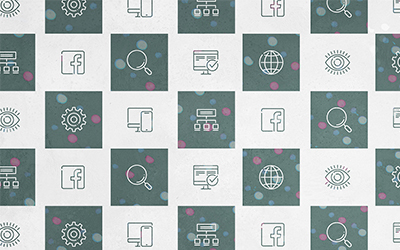Content Marketing
Marketing Automation

Written By
Wray Ward
Maintaining a focused and effective email marketing plan is a vital way to reach customers. However, with the increasingly virtual nature of customer interaction, email marketing carries more weight than ever. But how do you stand out in a sea of emails? After all, more than 300 million emails are sent daily worldwide.
Mapping your customer journey — and creating email campaigns to match that journey — will help you build better relationships with your audience at every step, from prospect to purchase.
Know Your Audience
Knowing your audience — who they are, what they want and what motivates them — is the first step toward a successful marketing journey. Where are they in the buying process? What do they need to continue moving forward? The answers to these questions should help inform the content and frequency of emails you send.
For example, if you’re attracting customers during their initial engagement, you will want to demonstrate knowledge of your product or industry. If they are further engaged or an existing customer, the email journey should focus on getting them to consider additional products or services. Lastly, emails can be used to reaffirm long-term customers of their relationship with you and create lifelong supporters of your brand or company.
Creating deliberate segments within your larger distribution list enables you to send more focused communication, which will make your efforts more successful.
Deliver the Content They Need and Want
Once you know who is receiving your emails and why, content is king. Emails should be specific to the customer’s stage of the journey and highlight products or services related to their needs.
Email personalization is one approach you may want to consider. Most email marketing software platforms offer this functionality, and it can go a long way toward making your message feel relevant to the reader.
Most important, every email should include an opportunity to progress in the sales journey. That said, keep it simple. You want to have a clear message and opportunity for customers to take the next step included within the email.
Don’t Be Afraid to Let Go
Lastly, don’t be afraid to let go. You want email journeys to be effective. If you find that a certain approach is not working for a set of customers (e.g., they’re not engaging or clicking through), remove them from that particular journey. You can revisit steps one and two and try a different approach with those customers to reel them back in.
Once you find that you are getting engagement from a particular journey, it’s time to refine how often you’re emailing. You want to have consistent communication without becoming overwhelming. Your frequency sweet spot will look a little different for each type of email journey, but generally speaking, an email every three weeks works well. This time period keeps your company in the forefront of the buyer’s mind while giving your sales team time to make contact.
These simple steps won’t guarantee sales, but they will ensure you’re reaching your target audience, providing them with the information they want when they want it, and keeping them as engaged as possible.


